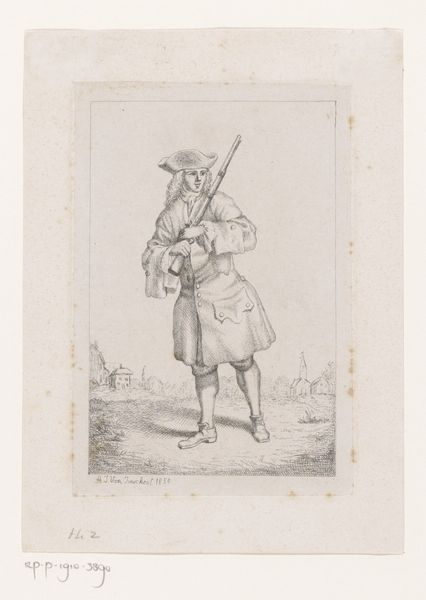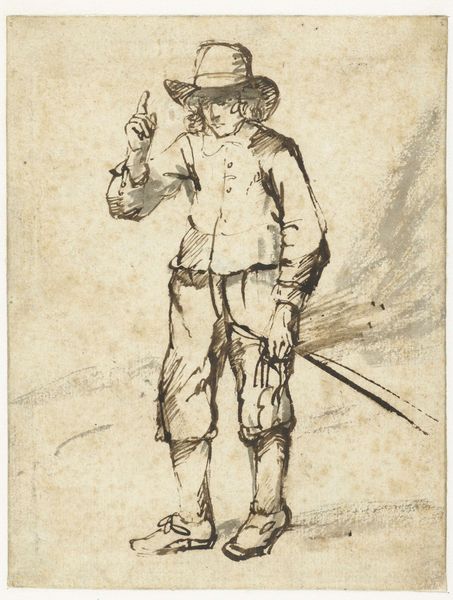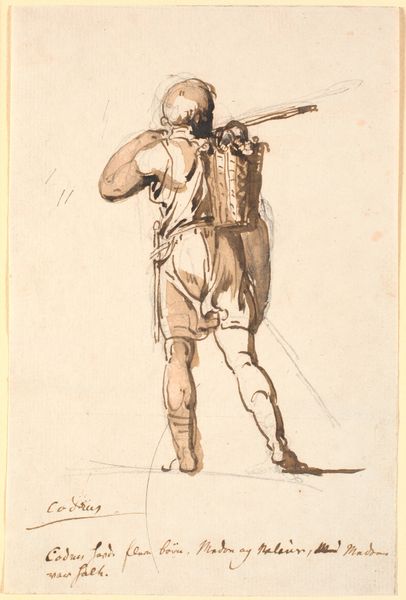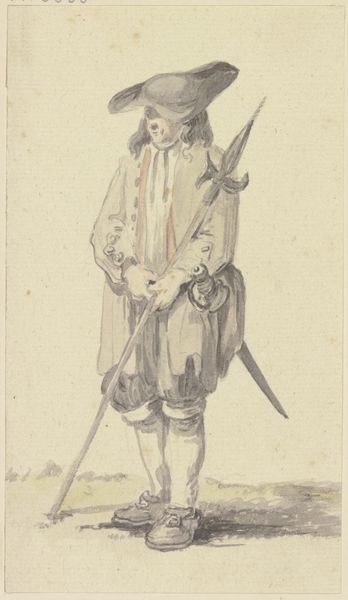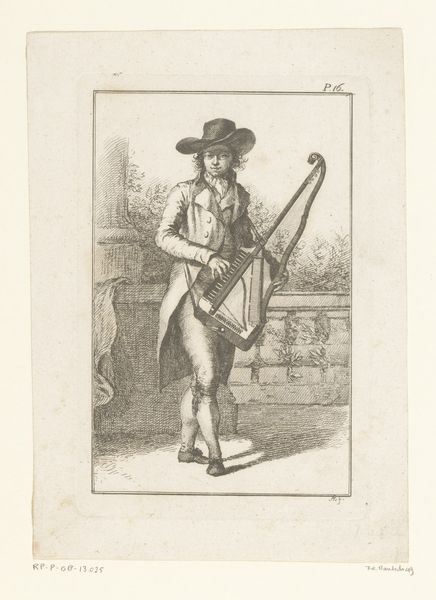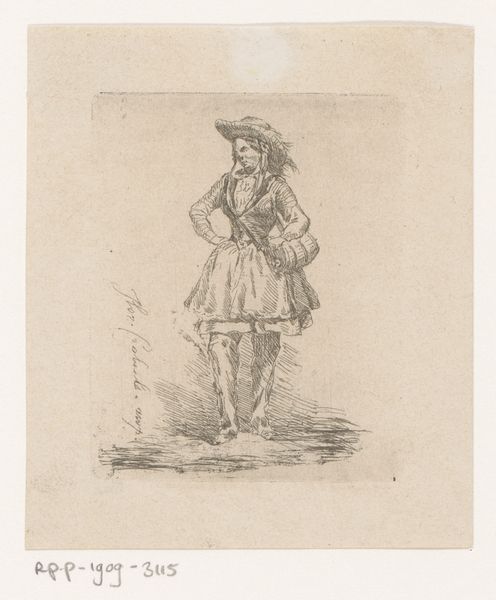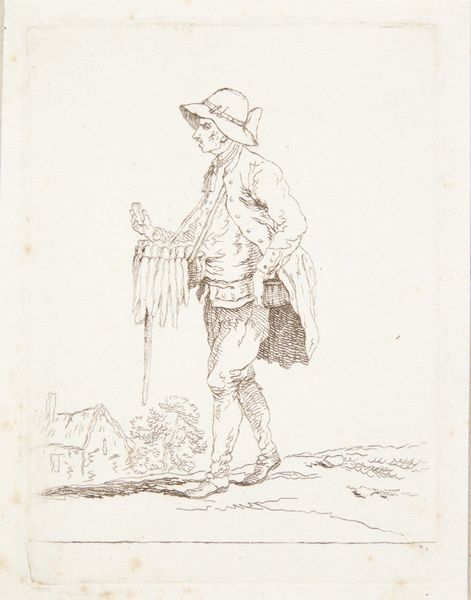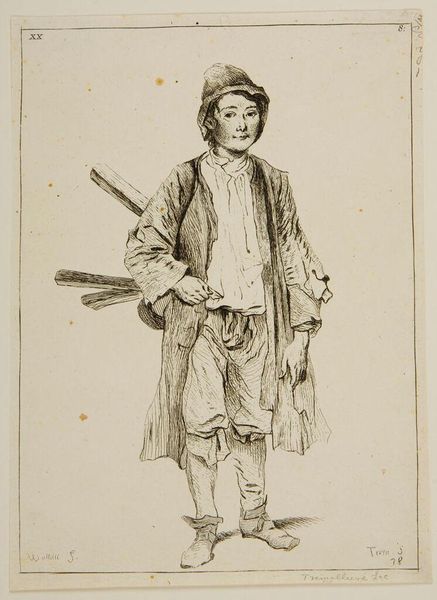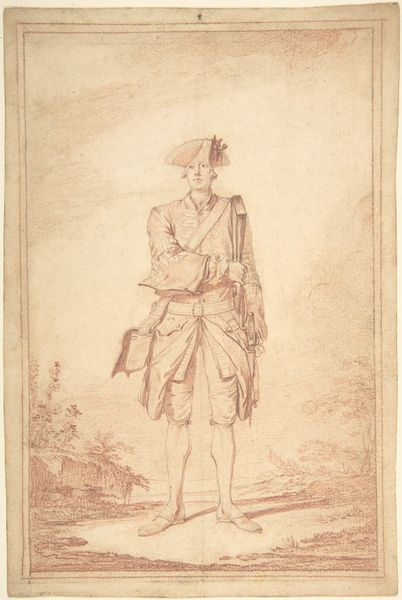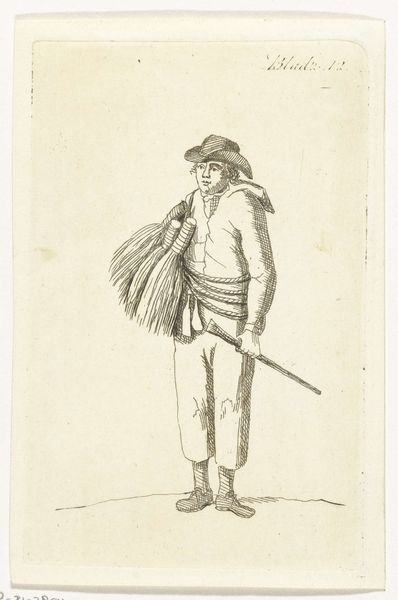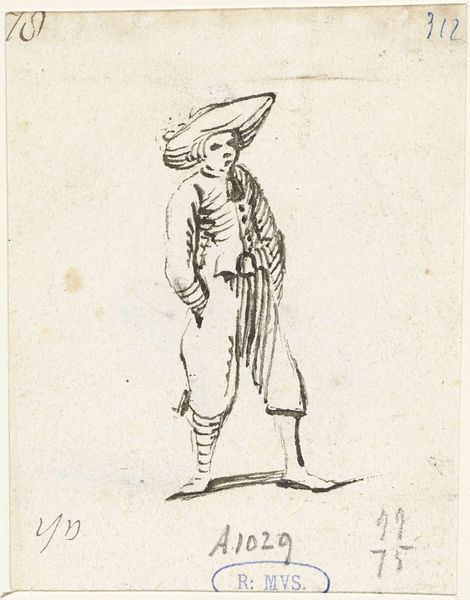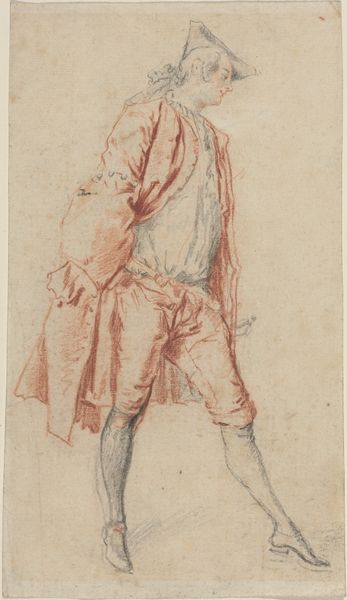
Dimensions: 45 mm (height) x 53 mm (width) (plademaal)
Editor: This print, titled "Man med Stok, hel Figur," which translates to "Man with Stick, Full Figure", is by W.A. Müller, likely created sometime between 1733 and 1816. It's done with engraving. The figure looks jaunty. I'm curious, what's the story behind this man with a stick? What does it all signify? Curator: Well, at first glance, it appears a simple genre scene, a man taking a stroll. But look closer. Notice how he holds the stick. How his clothes are worn? Sticks, throughout history, aren’t just walking aids, they’re symbols. Editor: Symbols of what, though? Curator: Authority, certainly. Think of a scepter, a bishop's crozier, or even a shepherd’s staff. But this man, his stick isn’t polished or ornate. It's more… utilitarian. What might that suggest to you? Editor: Perhaps a traveler? Someone on a pilgrimage or journey? Curator: Exactly! Sticks represent journeys. The engraving process itself is telling. It makes me think about wider cultural accessibility. Prints democratize imagery and bring new ideas and styles into the world, almost as this stick brings stability to someone on a journey. It reminds us that art changes and forms us. Editor: So, it's not just a portrait, but a symbol of movement, maybe social movement, the democratisation of images. Curator: Precisely! It reveals much about the aspirations and movements of the time, mirroring the cultural shifts embedded in the romantic ideals of individuals charting their paths. Each element carries layers of historical and cultural resonance. Editor: It is a fascinating picture that tells stories about identity and travel with this fresh interpretation! I now understand the subject in relation to society. Curator: Indeed. The more you study, the richer the symbols become.
Comments
No comments
Be the first to comment and join the conversation on the ultimate creative platform.
